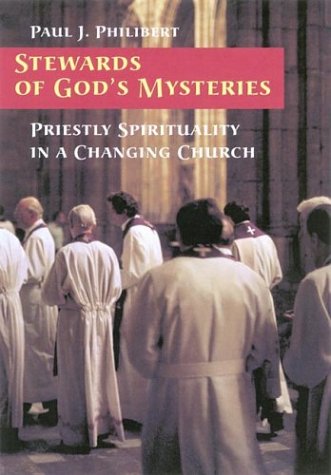|
|||
| What Priests Need Today Stewards of God’s Mysteries: Priestly Spirituality in a Changing Church | |||
| by Paul J. Philibert, O.P. The Liturgical Press. Collegeville, Minnesota. 2003 Reviewed by A W Richard Sipe | |||
|
Two of the three main authors are dedicated and devote priests, gay oriented scholars, who pool their theological and psychological expertise to build on the remarkable and durable document The Spiritual Renewal of the American Priesthood issued by the National Conference of Catholic Bishops in 1973. Skillfully they draw on some the most profound sources of reflection on the priesthood written since that study came out—Ray Brown from a biblical perspective, Philip Murnion and Dean Hoge with sociological insight, numerous pronouncements of the US bishops and recent popes including encyclicals of Paul VI, Evanglii Nuntiandi and John Paul II, Pastores Dabo Vobis It is written in a form intended to foster discussion and perhaps it succeeded. It has been my experience that just getting priests together to talk about serious personal and spiritual issues can be productive. But the book is self-defeating in three respects. It veers to the “mystagogical dimension of priesthood and celibacy” that is—the unreasonable, unnatural, and excessive. (P.54) Rather than making priesthood and celibacy more understandable, reasonable, and naturally attainable and within the reach of dedicated men, it casts them into the ethereal realm of dream, an area of the mind vulnerable to discouragement and defeat. It perpetuates the myth that priests are “like angels,” an attitude inimical to the meaning of practical priestly service and one infectious with clericalism. Honesty about celibacy and the realistic preparation for it are almost entirely skirted or translated into more abstract psychological developmental issues. Loneliness—a major concern for anyone who attempts celibate living—is acknowledged, but entirely separated from the problem of the inadequate sexual/celibate religious training. Masturbation, the most common sexual outlet for priests, is given only a blink and a nod without helping the intended audience find its real relationship with the development of sexual/celibate self-knowledge. The authors appeal to a Los Angeles Times 2002 national survey to bolster their argument of how satisfied priests are with life. ‘Priests are the happiest men in America’ is one way in which that study has been touted. But the results of that survey say nothing about the degree or the way priests practice celibacy. Many unmarried men are satisfied with a life in which sexual contacts are al-a-cart. Pornography, anonymous encounters of various types, sexual experimentation with men or women without commitment, or transient love relationships–again with men or women–are well documented among the clergy population. These burning issues are not invited by the tone or content of this book. This report is out-of-date and skewed even when published. The authors depended on the New York Times (2003) to claim that “1.8 percent of U.S. Catholic priests have been accused of perpetrating some act of sexual abuse according to a sensationalized news report…” [emphasis added] A more realistic count is that of the John Jay study that records that 6.6 percent of all U.S. priests ordained between 1960 and 1984 have been reported for child abuse. From the beginning of training, candidates must be told the truth about the work of being a priest—serving others. That involves real joys and sorrows, trials and burdens, and continued and practical self-testing. The Renewal of the priesthood involves striping the office of its myth and mystery (its clericalism that relishes superiority and control) and putting clerics in touch with the spirit of Jesus—the Jesus whose most mysterious reality can be perceived by every sincere seeker. The guidelines of priestly spirituality should be Real and Practical as they were explained by John of the Cross in 1586 at another time of crisis in the priesthood. Richard Sipe
|
|||

 The
object of this study is exemplary—to help Catholic priests develop
and sustain a spiritual depth sufficient to struggle valiantly with
the rigorous demands inflicted by their service to humanity. The
demands are undeniable; the priest shortage, overwork, societal
challenges of a consumer driven attitudes, shifting demographics
that disrupt or destroy the traditions of parochial stability,
loneliness, the requirements of sustaining celibacy, and more.
The
object of this study is exemplary—to help Catholic priests develop
and sustain a spiritual depth sufficient to struggle valiantly with
the rigorous demands inflicted by their service to humanity. The
demands are undeniable; the priest shortage, overwork, societal
challenges of a consumer driven attitudes, shifting demographics
that disrupt or destroy the traditions of parochial stability,
loneliness, the requirements of sustaining celibacy, and more.